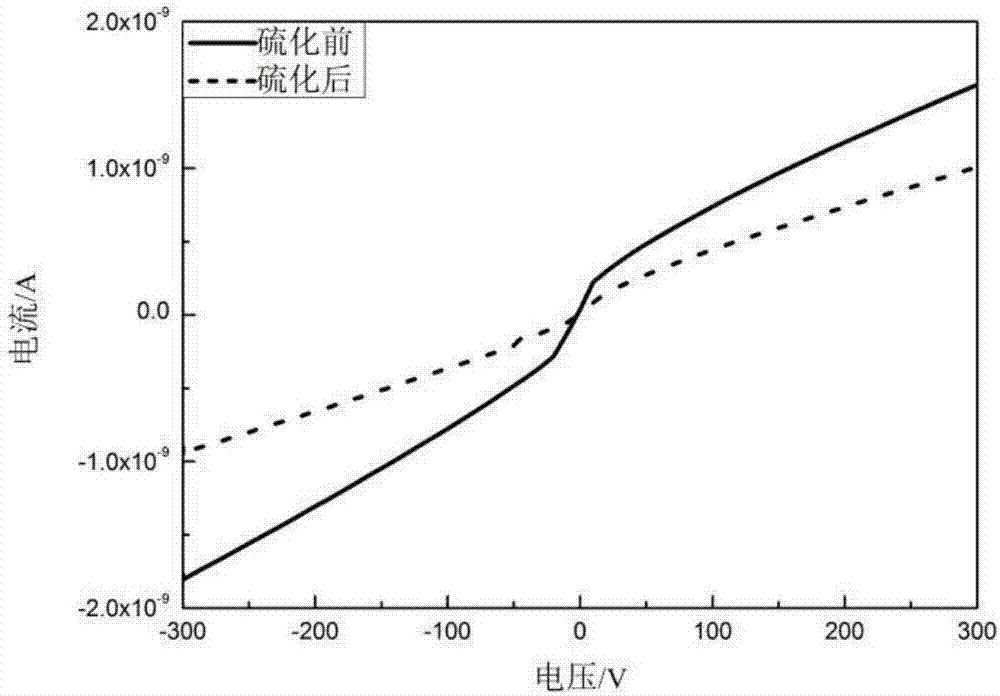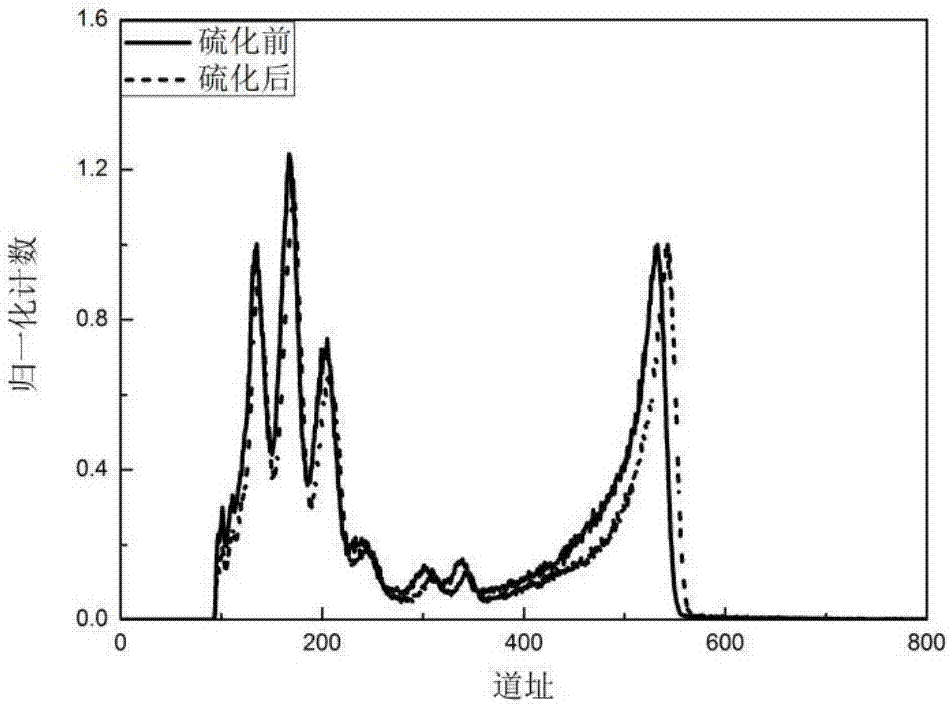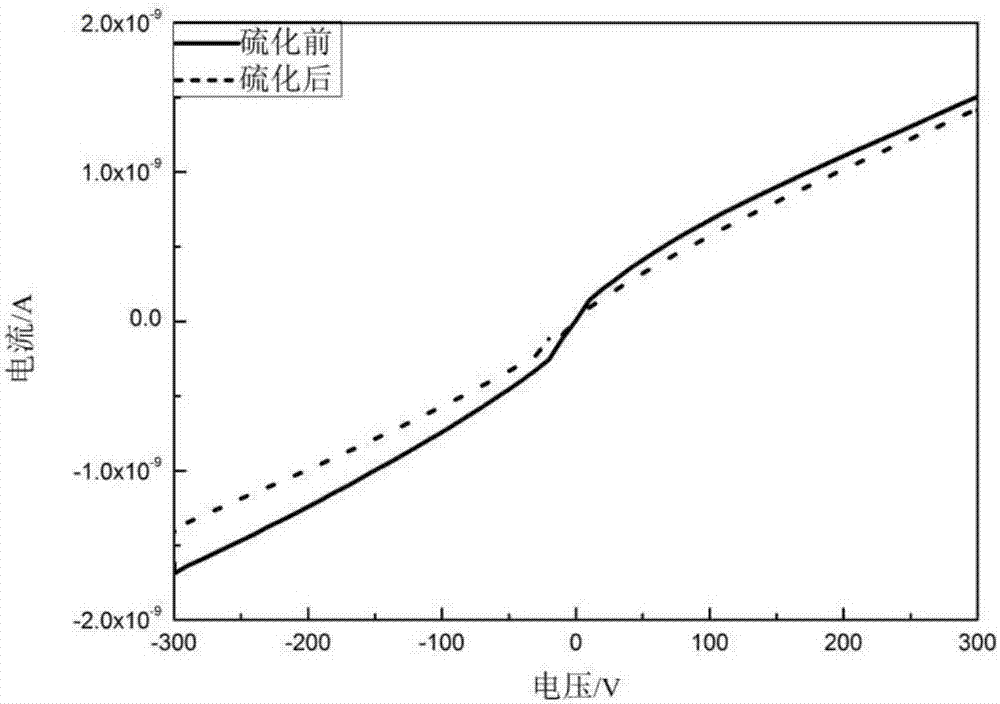CdZnTe planar detector surface treatment method
A surface treatment and detector technology, applied in the field of planar detector surface treatment, can solve problems such as poor energy resolution, achieve the effects of improving stoichiometric ratio, reducing leakage current, and reducing scattering
- Summary
- Abstract
- Description
- Claims
- Application Information
AI Technical Summary
Problems solved by technology
Method used
Image
Examples
Embodiment 1
[0028] Step 1. Make the size 5×5×2mm 3 The CZT wafer is first rough polished on both sides with MgO on the grinding and polishing machine, and then polished with fine polishing liquid.
[0029] Step 2. After cleaning and drying the polished CZT wafer, configure a bromomethanol etching solution with a concentration of 1:50, etch the CZT wafer in the bromomethanol etching solution for 2 minutes, and then wash and dry it with deionized water after etching. This step was done in a fume hood.
[0030] Step 3, plate Au electrodes on the corroded CZT wafer within half an hour by vacuum evaporation method, and vacuumize 5×10 -3 After Pa, vapor-deposit on both sides for 5 minutes.
[0031] Step 4. Protect the Au electrode surface with photoresist, remove the side damage layer by side polishing, then passivate the side with hydrogen peroxide for 5 minutes, and finally remove the photoresist with acetone, clean the CZT wafer and dry it to obtain a CZT planar detector .
[0032] Step ...
Embodiment 2
[0038] Step 1. Make the size 5×5×2mm 3 The CZT wafer is first rough polished with MgO on both sides on the grinding and polishing machine, and then polished with fine polishing liquid.
[0039] Step 2. After the polished CZT wafer was cleaned and dried, a bromomethanol etching solution with a concentration of 1:50 was prepared, and the CZT wafer was statically etched in the bromomethanol etching solution for 3 minutes. After etching, it was cleaned with deionized water and dried. This step was done in a fume hood.
[0040] Step 3. Plating Au electrodes on the corroded CZT wafer within half an hour by vacuum evaporation method, vacuuming 5×10 -3 After Pa, vapor-deposit on both sides for 4 minutes.
[0041] Step 4. Protect the Au electrode surface with photoresist, remove the side damage layer by side polishing, then passivate the side with hydrogen peroxide for 8 minutes, and finally remove the photoresist with acetone, clean the CZT wafer and dry it to obtain a CZT planar de...
Embodiment 3
[0047] Step 1. Make the size 5×5×2mm 3 The CZT wafer is first rough polished with MgO on both sides on the grinding and polishing machine, and then polished with fine polishing liquid.
[0048] Step 2. After cleaning and drying the polished CZT wafer, configure a bromomethanol etching solution with a concentration of 1:50, etch the CZT wafer in the bromomethanol etching solution for 5 minutes, and then wash and dry the CZT wafer with deionized water after etching. This step was done in a fume hood.
[0049] Step 3. Plating Au electrodes on the corroded CZT wafer within half an hour by vacuum evaporation method, vacuuming 5×10 -3 After Pa, vapor-deposit on both sides for 3 minutes.
[0050] Step 4. Protect the Au electrode surface with photoresist, remove the side damage layer by side polishing, then passivate the side with hydrogen peroxide for 10 minutes, and finally remove the photoresist with acetone, clean the CZT wafer and dry it to obtain a CZT planar detector .
[0...
PUM
 Login to View More
Login to View More Abstract
Description
Claims
Application Information
 Login to View More
Login to View More - R&D
- Intellectual Property
- Life Sciences
- Materials
- Tech Scout
- Unparalleled Data Quality
- Higher Quality Content
- 60% Fewer Hallucinations
Browse by: Latest US Patents, China's latest patents, Technical Efficacy Thesaurus, Application Domain, Technology Topic, Popular Technical Reports.
© 2025 PatSnap. All rights reserved.Legal|Privacy policy|Modern Slavery Act Transparency Statement|Sitemap|About US| Contact US: help@patsnap.com



